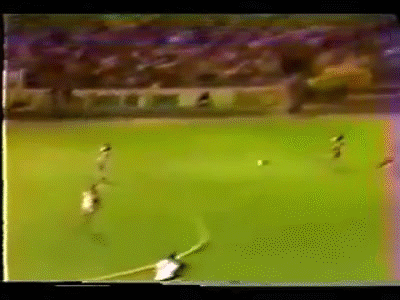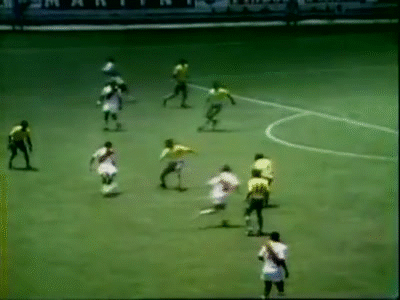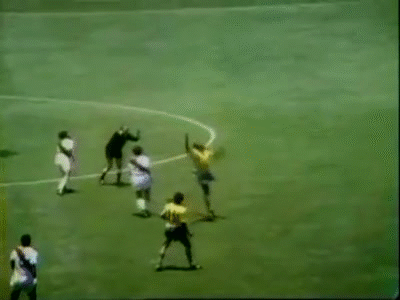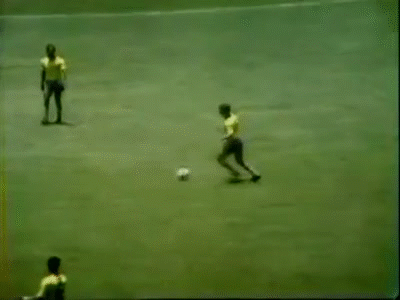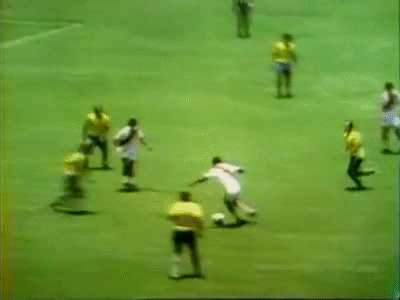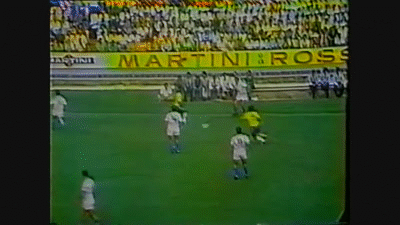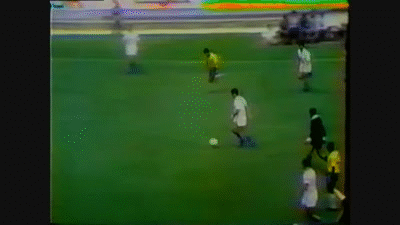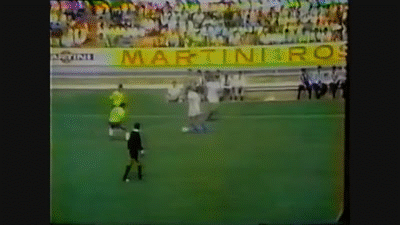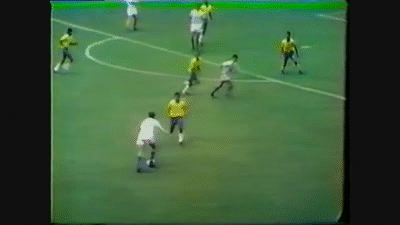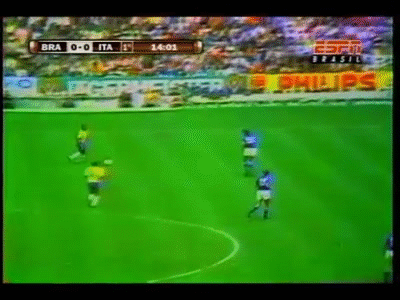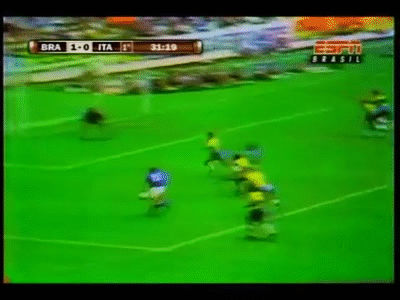Moby
Dick
Team Gio/Theon
WHY WE WILL WIN:
- Bulletproof defence. Elias Figueroa and Bobby Moore are the standout central defenders in the draft (alongside the Kaiser) and in the top echelon of all time. Voted a record three time South American Footballer of the Year - Figueroa's taming of the great Muller in 1974 is the stuff of legend. Voted in the FIFA All Time World Cup XI as well as the World Team of the Century - Bobby Moore is equally impressive, quelling Eusebio in 1966, Pele in 1970 and making more recoveries of possession than any other player in the history of the World Cup.
- Out wide we should cancel out the threat posed by Tuppet. Anczok and Causio will duel it out and, in all likelihood with similar qualities, cancel each other out. On the other side, Dzajic is a tricky customer who demands special attention. Luckily we have two-time Bulgarian Player of the Year Shalamanov who will stay tight, using his Olympian physicality and dogged resilience in one-on-one situations to mitigate the threat. Importantly both Moore and Figueroa are exceptional at covering should the need ever arise, whilst Clodoaldo, Gerson, Rocha and Deyna provide support from midfield.
- Stronger midfield based on the proven World Cup winning platform of Gerson and Clodoaldo. That partnership dominate every midfield they faced in 1970. With that solid base, we should dictate the ball and will overwhelm Tuppet with the endless creativity boasted by Gerson, Pedro Rocha, Kazi Deyna and Teo Cubillas. The combination play will be too hot to handle - with the ball-playing excellence of Figueroa/Moore in defence, the physicality and energy of the full-backs out wide, and the tailored line-leading fit of Asparuhov, the midfield is supported to control the game.
- Quality through the spine from front to back should reinforce control. We have a set of outstanding South Americans in Cubillas, Figueroa, Rocha, Gerson and Clodoaldo all amongst the very best the continent has ever produced. From Europe, Kazi Deyna is a shining light, dominating and scoring against not only Benetti's Italy in 1974, but also Lovchev's USSR in 1972, and Melendez's Peru in 1977. Up top Asparuhov is a handful for any defence with his presence, height and fantastic technical ability. Absolutely no weak spots through the spine and strength in key areas will make the difference.
TEAM GIO/THEON

TEAM TUPPET
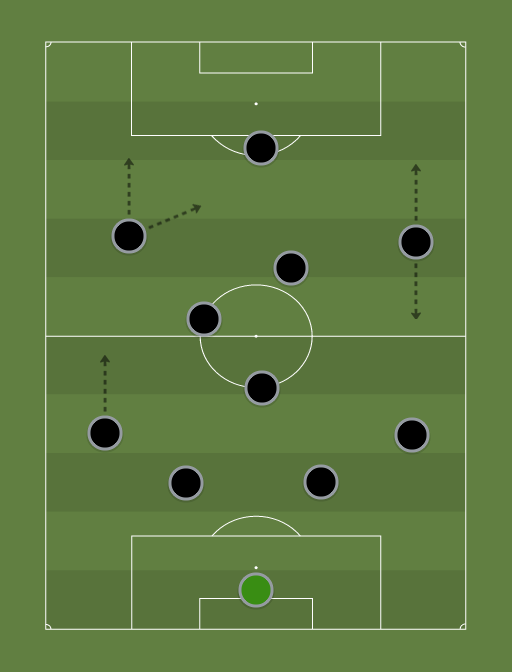

TEAM TUPPET

Team Tuppet
In Gerd Muller I’ve added one of the most clinical striker of all time. While his goal-scoring record needs no introduction, its his big game impact that is sometimes overlooked. Muller was without a doubt one of the most decisive player in history. Both his decisiveness and big game mentality is showcased by his record in world cup, where he scored 14 goals in 13 matches, scoring at 1.03 goals per game and 6 of those were decisive goals, culminating in the winning goal in finals vs the great dutch side of Cruyff.
Equally importantly, he fits in perfectly in my team as well. With 3 superlative dribllers in Dzajic, Causio and Rivera making space behind him. These 3 with their vision and creativity, would make horde of chances and as the best finisher in the draft, Muller is ideal striker for my team.
While Rivera and Causio connecting with Muller is pretty mouth watering, I am most excited about Dzajic - Muller combination, most because Dzajic while being one of the best dribblers in the business, he was also a crosser of highest standards.
Here he has Muller to convert the crosses and I don’t care how good opponent’s defense is, this combination is irresistible and would beg at least a goal.
Romeo Bennetti would combine with Rivera, a proven partnership which helped Rosseneri dominate the early 70’s in serie A. Bennetti was a defensive box to box player, like Tardelli, he was aggressive and physical yet provide a fantastic outlet in running with ball in midfield. Following clip shows his attacking game, playing beautiful one two with Causio and providing final cross for Bettega -
Bennetti along with Piazza would make a solid defensive base in my midfield, which would help my attacking players to flourish more and counter the mostly narrow threat from opponents.
Equally importantly, he fits in perfectly in my team as well. With 3 superlative dribllers in Dzajic, Causio and Rivera making space behind him. These 3 with their vision and creativity, would make horde of chances and as the best finisher in the draft, Muller is ideal striker for my team.
While Rivera and Causio connecting with Muller is pretty mouth watering, I am most excited about Dzajic - Muller combination, most because Dzajic while being one of the best dribblers in the business, he was also a crosser of highest standards.
Here he has Muller to convert the crosses and I don’t care how good opponent’s defense is, this combination is irresistible and would beg at least a goal.
Romeo Bennetti would combine with Rivera, a proven partnership which helped Rosseneri dominate the early 70’s in serie A. Bennetti was a defensive box to box player, like Tardelli, he was aggressive and physical yet provide a fantastic outlet in running with ball in midfield. Following clip shows his attacking game, playing beautiful one two with Causio and providing final cross for Bettega -
Bennetti along with Piazza would make a solid defensive base in my midfield, which would help my attacking players to flourish more and counter the mostly narrow threat from opponents.
Tactics:
A pretty straight forward 4-2-3-1. With Gio/Theon’s midfield I expect them to have more possession (not crazy amount though) and we will play more on counter attack. The pace in my wings, Rivera’s ability to play fantastic balls to my rushing forward and the finisher extraordinaire Muller suits perfectly for my game plan.
Starting with defense, Lovchev would be more adventurous full back, providing overlaps for Dzajic on left side, while Fazlagic would be more cautious on the other flank. Fazlagic was still pretty good at going forward, he would just choose his moments more carefully, which works well with Causio’s strength. At center Sheysternyov would be more aggressive center back, his physical attributes would help a lot in keeping up with the threat of Gundi.
In the midfield, Piazza would be the disciplined defensive midfielder, who would look to maintain shape and keep up with the opponent’s number 10s. His ability to work as a center back would be very helpful for covering my rather adventurous full backs. When one of my full backs go on runs, Piazza would drop deep to make almost 3 at the back, which works very well in this game, as Gio/Theon does not have a proper winger, and most of his threat is central. Bennetti would play his defensive box to box midfielder role, where he would look to break the moves, winning ball higher in the pitch, and either run with the ball himself or pass it to more creative players. His lovely short passing and great engine would be very important for my team to battle with my opponent’s great midfield.
The 3 behind my striker doesn’t need much introduction, all 3 of them legends in their own regard. Rivera would be the main playmaker, spraying the ball around for my fantastic wingers. Rivera was not a static playmaker, he was in the mould of platini/cruyff in that he loved to drop deep to collect the ball and then use his fantastic dribbling ability to drive forward to play final balls or to finish moves himself. While he is more about finesse, he never shrieked from defensive duties. On left I have the legendary left winger Dragan Dzajic, who would play as a wing forward, providing directness and goal threat from left side, he would combine with Muller to either provide him chances or feed off himself from Muller’s hold up game. On the right sideI have Causio, who would play more as wide midfielder, using his fantastic stamina and work rate to cover the right flank. Causio himself a great creative player, fantastic crosser and passer, he provides balance and variety in my attack.
Finally Gerd Muller would do what he does best, that is to put the ball in back of the net. Now, Gio/Theon has a great defense, the best that could be assembled in this draft, and I am sure Figueroa vs Muller clip would be posted soon enough. But I believe that a great attack often breaks a great defense eventually. With the technical ability, creativity and multiple attacking routes in my front four, there would be lots of chances created and all it takes is one half chance, a slight mistake and Muller would punish you.
Few Points:
1. The only criticism I had in the Gio/Theon’s last game is the compatibility of their 3 Attacking midfielders. All of Cubillas, Deyna and Rocha played their best as primary playmakers of their team. I don’t think all 3 of them would work at their best lumped together. They might work, but all the clips and accolades you’d see posted here are when these players played as central attacking midfielders. That is not going to happen here. On the other hand all of my players are playing in their best roles.
2. With no out and out winger, most of the Gio/Theon’s threat is central, with Bennetti - Piazza, my midfield is well set to counter it.
3. Gundi’s biggest strength is his aerial ability, he seem to me a target man type striker, which would have profited a lot from a proper winger pinging crosses in. Without that route, Gio/Theon’s attack is a bit one dimensional and easier to defend against.
4. Finally they have added Gerson in the mix, who again play best as the main playmaker of the team. There are just too many players who work best when they have ball most of the time and not enough ball winners.




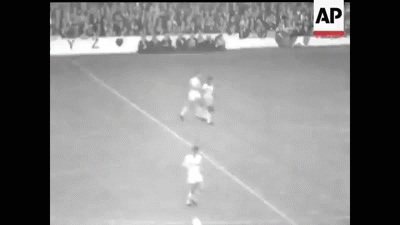
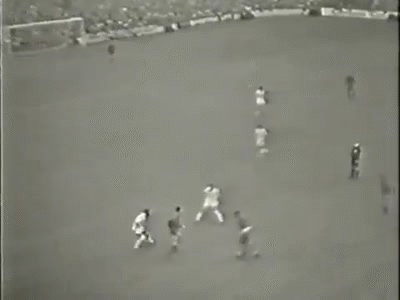
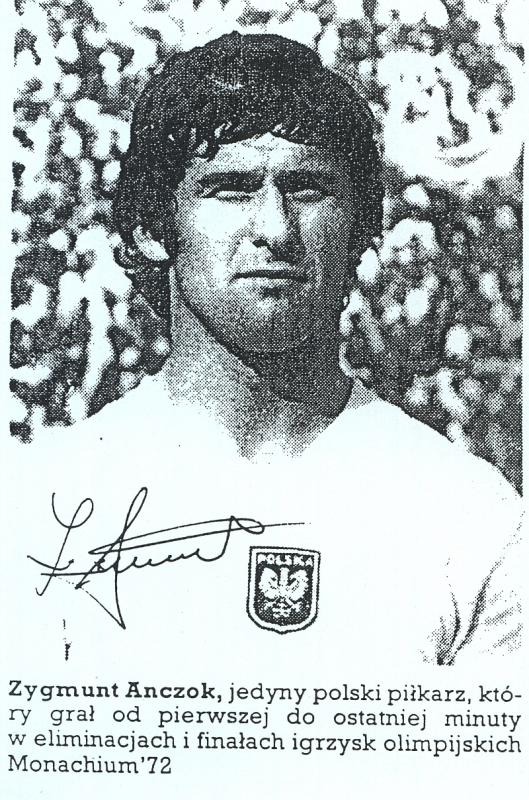

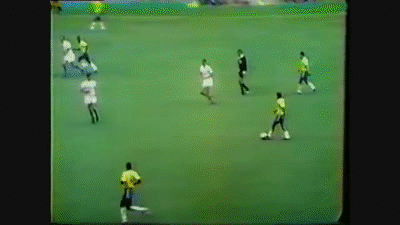
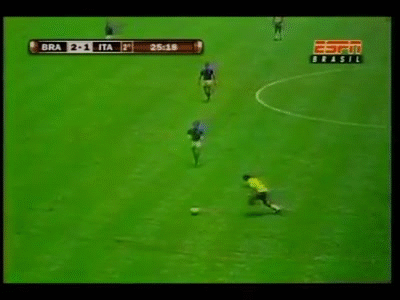












 Brutal, I like it
Brutal, I like it
